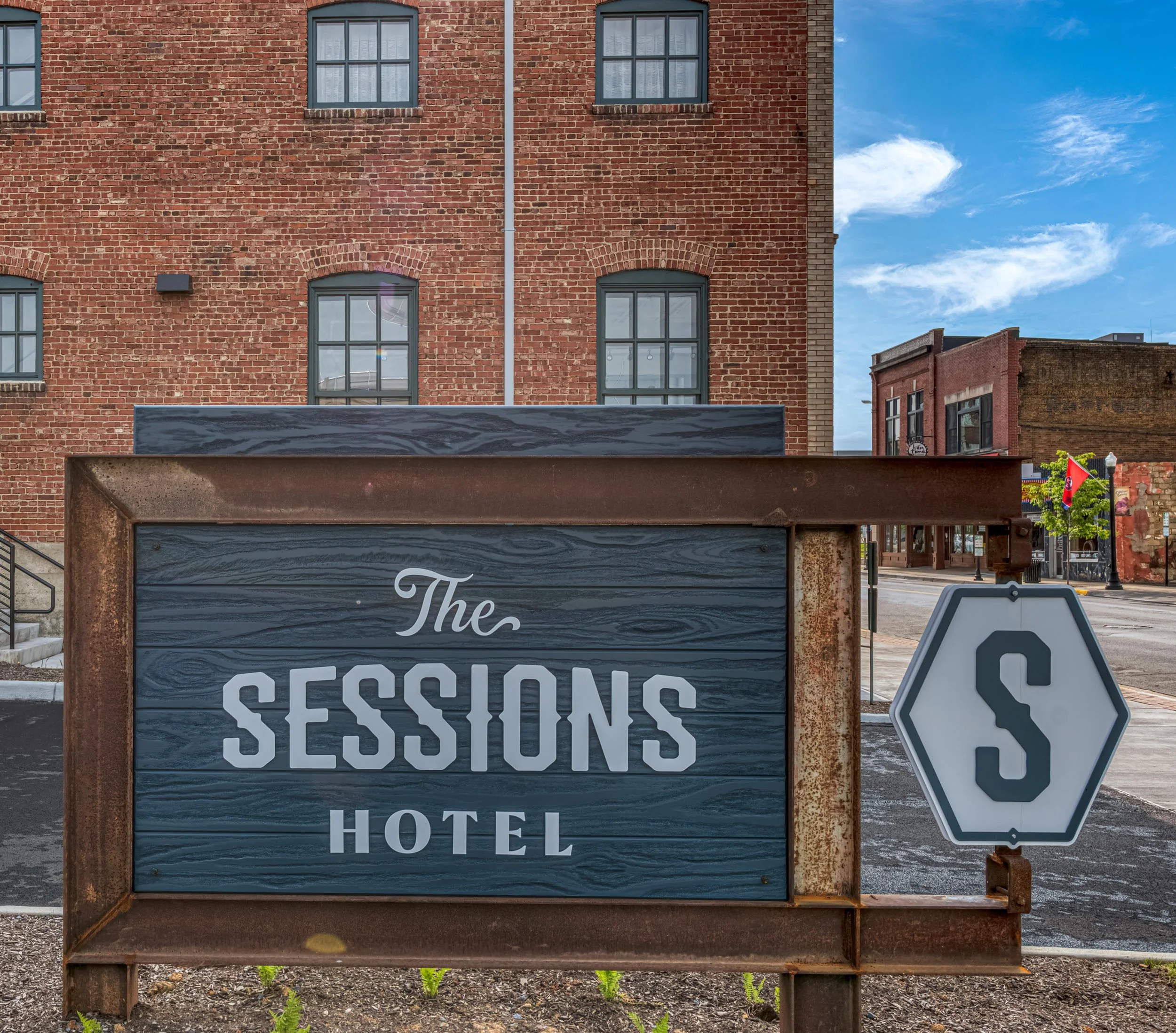The Sessions Hotel
Reimagining the Guest Experience at The Sessions Hotel: A UX + Spatial Audit by Maison de Méthode

Hotel
User Experience
This case study blends UX research, behavioral insight, and environmental storytelling to explore how boutique hotels can better connect with guests, before, during, and after their stay.
The Sessions Hotel in Bristol, Virginia is a boutique property rooted in the rich musical heritage of its location. With reclaimed architecture, themed rooms, and a strong brand narrative centered on creativity and storytelling, it offers a compelling canvas for guest experience design. But like many boutique hotels, there’s a gap between the atmosphere it creates in person and the one it delivers online.
As part of my work with Maison de Méthode, a research-led studio focused on spatial UX and hospitality experiences, I conducted an independent audit of The Sessions Hotel’s digital and physical guest journey. This case study explores how well the hotel’s booking experience, website, and on-site interactions reflect its brand identity, support usability, and foster emotional engagement.
The goal of this research was twofold:
- To assess where friction or inconsistency might be reducing guest satisfaction across both digital and physical touchpoints.
- To propose thoughtful, brand-aligned recommendations that elevate the experience while preserving the hotel’s personality.
Ironworks Hotel Indy blends industrial style with refined hospitality, delivering a memorable sensory identity and thoughtful pet-friendly touches. However, both the website and on-site journey reveal opportunities to improve usability, brand storytelling, and guest comfort. This audit examines the hotel’s digital booking experience alongside its physical guest journey, offering recommendations to align both with Ironworks’ strong brand identity.
Digital UX Findings
1. Website Branding & Design
- Strong industrial-chic visuals, but the brand story isn’t fully expressed on the site.
- Photography highlights spaces but could be more immersive with video, storytelling captions, or interactive features.
2. Booking Flow
- Navigation from homepage to booking engine involves too many clicks, with a disjointed experience between the hotel site and booking portal.
- Mobile booking works, but usability could be streamlined with clearer calendars and room previews.
- Loyalty recognition (Bonvoy) is not emphasized until late in the process.
3. Content & Communication
- Amenities are listed but lack clarity about pet policy, room layouts, and unique features (e.g., frosted-glass bathrooms).
- Local recommendations and experiences could be better integrated into the website to create a sense of place before arrival.
Physical UX Findings
Lobby & Wayfinding
- Second-floor lobby location is confusing for new guests; signage improvements would help orient travelers.
Sensory Branding
- The signature scent is excellent, welcoming, distinctive, and marketable as a takeaway product.
Elevator Design
- Mining-themed murals are misleading given there’s no historic connection; a wood-paneled elevator would better align with the industrial-modern design.
Pet-Friendly Experience
- Pet amenities (bowls, treats, bandana) add warmth, but sizing should be inclusive for larger dogs.
Room Layout & Privacy
- Frosted-glass bathrooms are stylish but unsuitable for double-bed layouts where families or friends may stay; they should be reserved for king rooms or suites.
Recommendations
Digital
- Simplify booking flow, especially on mobile.
- Add storytelling elements to highlight brand identity and unique features.
- Clarify policies (pets, room types) and showcase signature amenities online.
Physical
- Improve wayfinding to the lobby.
- Update elevator design to align with brand.
- Refine pet amenities for inclusivity.
- Tailor bathroom layouts to guest type.
Overall Impression
Ironworks Hotel Indy has a strong brand foundation with standout sensory branding and guest-friendly amenities. By aligning its digital booking flow with its physical experience, and refining touchpoints from the lobby to the rooms, the hotel can deliver a seamless, brand-driven journey that resonates with both leisure and business travelers.











